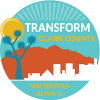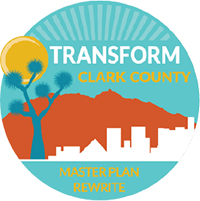Goal 3.6: Incorporate enhanced sustainability and resilience practices into the built environment
Mitigate the urban heat island effect in existing and new development through site and building features that provide shade, reduce the footprint of hardscaped areas, and otherwise help to reduce heat absorption by exterior surfaces.
Encourage compact, mixed-use, and transit-oriented development, or any combination thereof, in locations that will lessen reliance on automobiles as the primary means of access to necessary services and encourage reduction in vehicle miles traveled. [See also, Goal 4.1, Encourage the expansion and use of multimodal transportation options throughout Clark County, and related policies]
Reduce energy consumption by encouraging the integration of passive heating and cooling principles, superior insulation, energy efficient windows, use of environmentally-certified materials, and other techniques that improve energy efficiency in the design of new homes and buildings. Prioritize the use of incentives for net zero development.
Encourage the reuse of treated effluent for area green space including, but not limited to, parks and golf courses.
Using the SNRPC Plant List as a guide for appropriate plant choices, encourage the use of drought-tolerant, climate resilient, and desert-appropriate landscaping and the use of and irrigation systems that are designed for maximum water use efficiency.
Prioritize efforts to reduce transportation-related carbon emissions through expanded and inter-connected multi-modal transportation options. [See also, Goal 4.1, Encourage the expansion and use of multimodal transportation options throughout Clark County, and related policies]
Encourage the inclusion of green infrastructure such as rain gardens, permeable pavers, infiltration planters, and rainwater harvesting systems to larger scale infrastructure investments including pervious pavement with infiltration, vegetated swales, green roofs, bioretention, and grey water recycling systems.
Encourage the development of transmission capability and interconnectivity for distributed energy, cogeneration and alternative energy sources, including regional interconnectivity and transmission capability.

